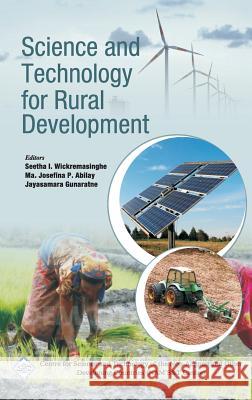Science and Technology for Rural Development/Nam S&T Centre » książka
Science and Technology for Rural Development/Nam S&T Centre
ISBN-13: 9789351241713 / Angielski / Twarda / 2012 / 360 str.
This book is a compilation of efforts from scientists, chief administrators and policymakers of fourteen (14) countries who have shared respective governmental policies and initiatives, methodologies and impacts, and case-studies on varied issues related to the application of science and technology (S&T) for rural industrialization. Likewise, there were country-specific contributions for the conduct of the four-day NAM S&T Centre-hosted International Workshop on the Application of Science and Technology for Occupational Villages Development, Rural Industrialization and Employment Generation in Hanoi, Vietnam on August, 2010. The book aims to share the participating countries endeavours, S&T implementation schemes, constraints encountered and corresponding solutions for other key bodies to learn from and perhaps to serve as the basis for present-day programs. The seventeen papers included in this book, all starting with backgrounds re how S&T, on a national scale, is utilized for economic development, are divided into three sections, namely, S&T for Rural Industrialization; Case Studies of Varied Approaches to Rural Industrialization, and Government Policies and Initiatives in Promoting Rural Industrialization. For the first section, it delves more into the national programs, strategies and methodologies of governments, i.e., the Philippines, India, Iran, Pakistan, Nepal and Myanmar, in alleviating mostly agricultural rural regions from poverty with S&T. Some of these further tackle the impact of these programs against general indicators such as employment and income generated. The second section, in contrast, focuses on case studies of specific industry sectors and/or sustainable S&T support schemes in the countries of India, Tanzania, Nigeria, Sri Lanka, Vietnam and Kenya. Information and Communications Technology (ICT), Geographic Information System (GIS) and locally-developed means of renewable energy generation are just some of the strategies discussed in depth. The last section, talks more about existing government policies and initiatives that are designed for rural growth. Countries Uganda, Ethiopia and Cambodia narrow in on specific policies and practical measures that have paved the way for economic transformations through S&T. It is the hope of the participant-countries, NAM S&T Centre, its member-nations and affiliates that this valuable joint resource may serve as the basis and reference point for main economic actors such as policy makers, government administrators and S&T service providers to constructively build on the successes and lessons learned of others for formulating policies and programs towards socio-economic progress











